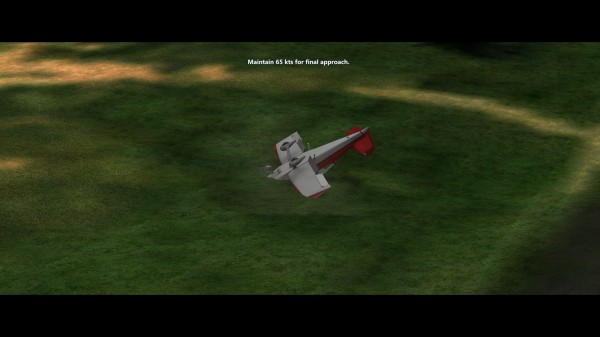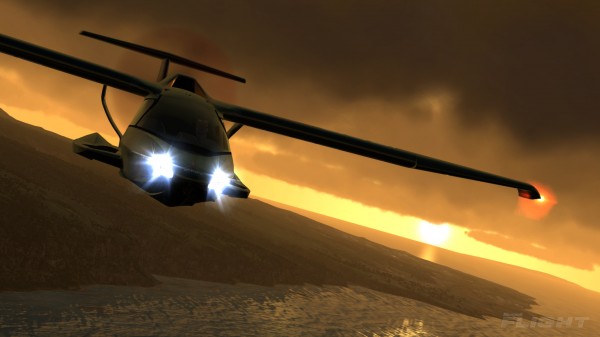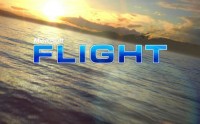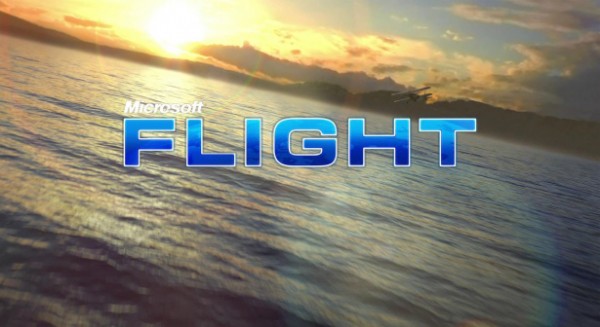When Microsoft first announced its reboot of the Flight Simulator franchise, I was confused. Scenery limited to the islands of Hawaii, planes coming via paid DLC only, and the dreaded Games for Windows Live on top of all of that. While Microsoft seemed to take much of what was great about previous iterations like Flight Simulator X and wall it off with microtransactions and a closed ecosystem to mods and addons, I hunched over my tried and true Flight Simulator 2004, assuring myself Flight was never going to be a “true flight simulator” and Microsoft would soon go back to their models of old.
Upon actually sitting down and playing Flight a bit, though, my skepticism turned to surprise. Flight is not terrible. Although the microtransactions and free to play nature of the game can become extremely heavyhanded at times, there are notable improvements over Flight Simulator X present that are both unexpected and welcome. None of it will be enough for Flight to overtake FSX in popularity with the hardcore simulator pilots, but as a more casual user, many of the changes Flight makes to the proven FSX model seem natural progression and can be appreciated by both new and old players alike.
The first is in controls. Flight still plays like the flight simulators of old, and although all of its “assists” default to on, the hardcore aviators need not fear that Flight is a step towards the arcadey direction. Never is there any question in Flight that you’re flying a plane rather than a bathtub, and although the dreaded landings are a bit easier than they were in FSX, I find that’s more a result of the starter planes in Flight being slower and easier to fly than the default FSX planes (only one of the three planes I’ve flown in Flight even has flaps). Although Flight is lacking support for more advanced systems like Track IR at the moment, the two joysticks I tried with Flight were automatically detected and mapped, as well as a wired Xbox 360 controller. Ultimately, however; Flight isn’t really directed at those that own Track IRs and find joy in lining up a perfect approach in their 747. If Flight Simulator X is a full-featured flight yoke, complete with pedals and force feedback, Microsoft Flight is an Xbox 360 controller. Although both are technically capable of getting your plane off the ground and into the air for both barrel rolls and IFR approaches, one is undoubtedly going to be more immersive and more faithful to the real experience. It’s not going to be the Xbox 360 controller, just like it’s not going to be Microsoft Flight.

The changes made to the model so proven in Flight Simulator X and prior doesn’t stop at the flight mechanics, however. Microsoft Flight appears to run on a modified version of the FSX engine, and although Flight retains the poor scaling and proportions of its predecessors, there are some welcome graphical improvements present that help bring the franchise into the age of graphical fidelity we’re so used to in 2012. With the focus on just the islands of Hawaii, Microsoft has been able to handcraft and refine the scenery far more than previous titles, and although there are still recycled buildings throughout, much more detail has been put into some of the distinctly Hawaiian landmarks and airports in Flight. Diamond Head, the Na Pali Coast, and the skyline of Honolulu look worlds better than their FSX counterparts, and you can tell that the smaller environment Microsoft had to work with in Flight paid off in the scenery department, even if it still contains some poor texture work and the proportions we’ve all come to love from Flight Simulators of old.

Probably the biggest question most have about Flight lies in its business model, however: free-to-play monetized with microtransactions. The base model of Flight, available for free, comes with one Hawaiian island (albeit the biggest), one small trainer plane, and then a Boeing Stearman available for free if you sign in to Windows Live in-game. The free version has all the features of the paid, multiplayer and persistent leveling included, just with approximately 1/5 of the scenery and 2/5 of the available planes. On release, however, Microsoft has made 3 pieces of additional DLC available. The “Hawaiian Adventure Pack” unlocks the rest of the island chain and one more plane, and the two plane DLCs consist of a P51 Mustang (without a cockpit, mind you), as well as a Maule STOL cargo hauler. For both testing and entertainment purposes, I caved and bought the $20 “Hawaiian Adventure Pack”, and for those that plan to spend any amount of time over one or two hours in Flight I recommend it. The amount of terrain greatly increases, as you can now fly from island to island, and the plane unlocked in the pack proves to be much faster and acrobatic than any of the stock planes in the free version.
But the scenery pack isn’t likely to be the issue most have with Flight’s DLC. The scenery pack, coming in at $20 seems a reasonable purchase for those who plan on spending more time with Flight. It unlocks a large amount of content and a new plane, and although one can argue it should have been unlocked from the start, it’s hard to deny that the scenery remains an infinitely better value than either of the planes available for purchase, which, coming in at $15 and $8, seems highway robbery in comparison.
Flight is a difficult game to properly review and judge. Looking at all of its respective parts, it has nearly everything modern gamers have grown to despise. Content is removed from the main game in favor of DLC monetization, the multiplayer component feels tacked on, the missions repetitive missions, and some of the dialogue and voice acting can be incredibly cheesy. All this does undoubtedly bog down the overall experience for Flight, but there’s still something to be said for just how good Flight feels. It’s difficult to convey in a review, but Flight still captures the thrill of flying a proper approach and sticking a landing just as well as past entries in the series have, and for that I have to give it some credit. I’d definitely recommend giving it a shot whether you’re relatively green to Flight Simulators or a seasoned veteran, as I guarantee your opinion will be different than mine.
Note: Since this article was written, Microsoft Flight has added one additional plane, a Japanese Zero fighter (outside model only, similar to the P-51 Mustang), and has released on Steam. Games for Windows Live is still present in the Steam release.

